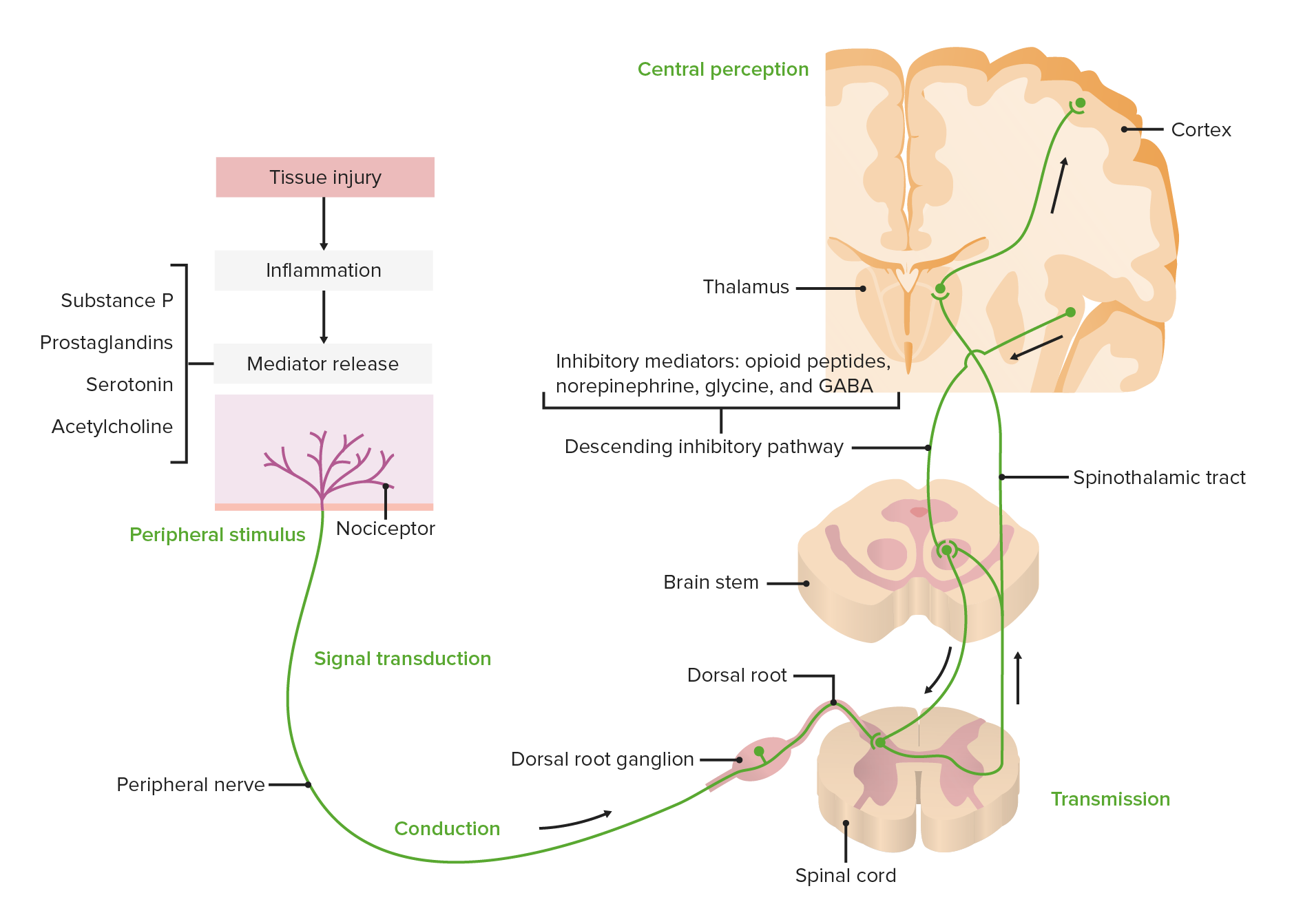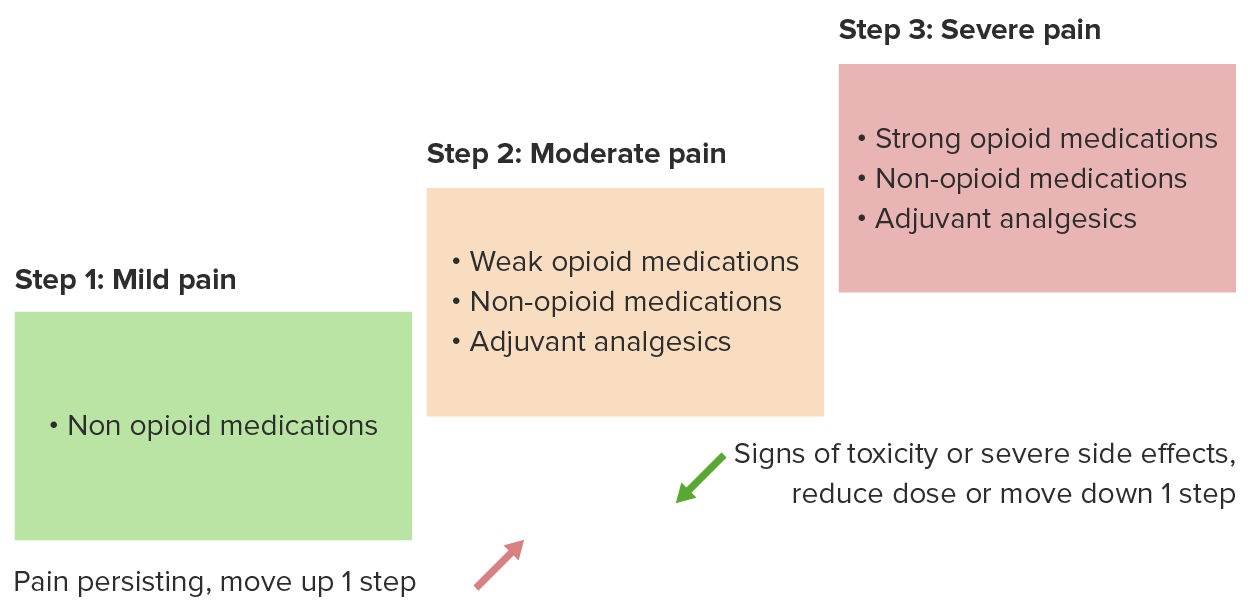Playlist
Show Playlist
Hide Playlist
Somatosensation – Other Senses (PSY, BIO)
-
Slides otherSenses SensingtheEnvironment.pdf
-
Reference List Psychology and Sociology.pdf
-
Download Lecture Overview
00:01 Okay. So let’s walk through some of the different senses that we can employ to engage with our environment. 00:06 So unfortunately for you, you’re at your computer screen right now and you don’t get to smell how fresh I smell right now, because I smell fantastic. 00:13 But if you were able to smell me right now, you’d be using your sense of olfaction. 00:19 Now, we’re going to work through some examples like that of what parts of our brain are we using, what are the different senses. 00:24 So one of them is somatosensation, and this is known as somatic senses of touch and tactile perception. 00:31 So when you’re engaging with actual objects, you know, how is that -- how does that encoded in your brain and where is that actually happening? So sensory information is detected by several different types of receptors. 00:43 So we can have mechanical, thermal. 00:45 You can have a whole bunch. 00:46 We’re going to go through a whole bunch of them right now. 00:49 And what happens is we detect that information, that information needs to get processed and that happens in the central nervous system. 00:58 So somatosensory information is carried from a sensor through a pseudounipolar nerve and synapse in the spinal cord. 01:07 And then that, eventually, goes up to the brain where it’s processed. 01:10 So, the nerves -- the nerve body or soma is located in an exterior body outside of the spinal cord called the dorsal root ganglion, and we’re going to show you images to highlight that. 01:19 Now, I think you probably studied over and over all the different lobes of the brain. 01:24 And within that tutorial, you might have heard the terms somatosensory cortex or motor cortex. 01:32 And as you can see from this diagram here,. 01:33 these are two bands that are found within the brain And this is where we believe that the bulk of somatosensory or information of our sensations is encoded and processed. 01:46 Now, this is a diagram of the overall process of you detecting something and where it’s going. 01:53 So as you can see here from the diagram, we have the hand. 01:56 And on your hand, you have your skin. 01:58 And within your skin, you’ll have the dermal layers and receptors. 02:02 And these receptors will detect information, like I’m holding this clicker in my hand right now. 02:06 How do I know that I’m holding it? The receptors can sense that feel and the touch that’s happening, and that information goes down. 02:16 Once activating the receptor, it goes down the neurons. 02:19 We call that the pseudounipolar neuron and it goes to the dorsal root ganglion. 02:23 At that point, it goes into the spinal cord and we’re showing a transection here. 02:29 So you'll notice in the gray, something called the dorsal horn. 02:32 And the ganglion projects into the dorsal horn. 02:36 It actually crosses the midline of the spine and then it goes on to travel up to the central nervous system. 02:42 more specifically, the thalamus. 02:45 And so a couple of points I want you to grasp out of this. 02:48 A, the process of the transmitting of the signal via the dorsal root ganglion and also, the fact that it enters the dorsal horn and crosses. 02:56 So what’s happening at your right hand goes across the spine and to the left side of your brain. 03:01 Okay. So we have this movement across, bilaterally across the spinal cord. 03:08 So we’ve mentioned that here as the info crosses to the other side of the spinal cord and goes up to the thalamus. 03:13 And it’s processed by the primary somatosensory cortex which is located, as indicated here, in the postcentral gyrus of the parietal lobe. 03:21 Now, these diagrams are quite deceiving because I think it’s so clear and color coded. 03:25 But in reality, we know that, you know, things aren’t yellow and pink and green when you open up somebody’s skull. 03:32 Everything looks one color and it’s based on certain landmarks and using sort of a human atlas of you know where things typically are if you’re in the area. 03:42 And you would know that there’s a small strip that’s in relation to something called the central sulcus, which is our gyrus, which is why things are called pre and postcentral gyrus. 03:54 So they’re referring to that landmark and that’s found up by the parietal lobe. 04:00 Now, we’re going to show an image here. 04:03 And you look at this odd looking character, right? So this is what we call a homunculus. 04:09 Now, what do you notice? Take a close look at this guy. 04:11 What do you notice other than the fact that he’s not wearing any clothes and he looks a little bit weird? You noticed that he has abnormally huge hands and he has big lips. 04:20 So there are certain characteristics on this little character. 04:24 And they’re meant to reflect the significance that we place on those areas of somatosensory information. 04:32 So as humans, we’re quite tactile. 04:34 We use our hands to touch a lot of different things; a toothbrush, doorknob, pen, other individuals. 04:40 And that information is really, really, really sensitive and really, really important. 04:45 And therefore, you expect it to have a nice representation in the brain. 04:48 As opposed to, say, a little floppy skin on the back of your elbow. 04:53 You can pinch it. 04:53 You can squeeze it. 04:54 It doesn’t really do much. 04:56 You don’t really feel lots on it. 04:57 And so therefore, you would think in the brain that you wouldn’t have a lot of brain space allocated to understanding and encoding that information. 05:05 So we say the degree of representation is directly linked to somatic importance. 05:11 Okay? Same thing with your lips, you know, kissing other individuals or eating. 05:16 A lot of information is encoded there so you expect to have a lot of representation in the brain. 05:21 Okay? So if you were take all the different parts of your body and figure out the amount of representation that we actually have in the brain and piece all that together, you get our good little friend here Mr. Homunculus. 05:32 Okay? Now, let’s get into the perception of pain. 05:37 So that is something that somatosensory information would encapsulate and capture. 05:42 And that’s done through a process that we call nociception. 05:45 So body’s ability to sense and process pain is known as nociception. 05:49 And that’s done through something called nociceptors. 05:52 And this can detect different types of information; chemical, thermal, mechanical stimulation. 05:57 So let’s break that down. 06:00 Chemical stimulation might be, for example, you spilling a bottle of crazy acid on your arm. 06:07 Okay? So that’s going to really, really hurt. 06:08 Now why does that hurt? Well, you have nociceptors that can detect that chemical information and activate a response. 06:15 And once you put your hand on a burning stove, what happens? Very quickly, you move your hand. 06:21 Now, you got to appreciate, and this is the science nerd in me, but how quickly all that happens? So how do you know? You’ve done this before. 06:27 You put your hand on something hot. How quickly you’re able to move your hand? That happens on the order of milliseconds, right? And thank God it does. 06:34 Otherwise, you’d have a lot of burn marks. 06:36 So you go and you touch that, and you got to think about what’s happening. 06:39 The receptor is actually detecting that thermal stimulation. 06:42 It’s sending the signal up your arm, across into the dorsal root ganglion, across the dorsal horn, up the spinal cord, to your thalamus where it’s being processed and you’re seeing a result in reaction which is typically some swearing and you moving your hand away. 06:56 And all of that is happening on the order of milliseconds. 06:59 So fairly, fairly impressive. 07:01 Now, three types of pain receptors are found. 07:05 One, in the dermal layer, the cutaneous layer of the skin. 07:08 You also can have a somatic sensation in your joints and bones. 07:13 And you also can have visceral receptors which are found in different body organs. 07:18 So different types of pain receptors, they're all classified under nociceptors and they can detect different types of information like chemical, thermal and mechanical. 07:28 So here’s a scenario exactly that I just talked about is a young girl reaching to the stove and some water spills and she’s going to sense that burning handle or the burning water that falls on her hand and that would be through the nociceptors and more specifically they’re capturing thermal information. 07:46 Now, let’s walk through that process that I quickly highlighted here. 07:50 So pain is carried to the DRG or the dorsal root ganglion and on to the thalamus, and that is where the processing happens. 07:56 So pain perception and its qualities are attributed in the somatosensory cortex. 08:00 Now this is a point I want to highlight. 08:03 So when you are burning yourself, and please don’t try this at home, but if that happens, your receptors aren’t necessarily determining the severity of burn or what’s happened or what to do. 08:16 They simply are being activated to the stimulus being come in -- that’s coming in. 08:20 And so the processing and how you respond to the pain and the aftereffects of the pain are all linked to the more cognitive function or the cerebral, the -- sorry, the central nervous system is processing all this information. 08:34 And so, it’s the marrying the two things of signal detection along with actual processing of information.
About the Lecture
The lecture Somatosensation – Other Senses (PSY, BIO) by Tarry Ahuja, PhD is from the course Sensing the Environment.
Included Quiz Questions
Which structure is involved in somatosensation?
- Thermal receptors
- Unipolar neurons
- Cochlea
- Stapes
- Hippocampus
What is the pathway from somatoreceptors in the left arm to the brain cortices?
- Receptors, left pseudounipolar neuron, left dorsal root ganglion, left dorsal horn, and right postcentral gyrus of the parietal lobe
- Receptors, left pseudounipolar neuron, left dorsal root ganglion, left dorsal horn, and left postcentral gyrus of the parietal lobe
- Receptors, right pseudounipolar neuron, right dorsal root ganglion, right dorsal horn, and right postcentral gyrus of the parietal lobe
- Receptors, left pseudounipolar neuron, right dorsal root ganglion, right dorsal horn, and right postcentral gyrus of the parietal lobe
- Receptors, left pseudounipolar neuron, left dorsal root ganglion, right dorsal horn, and right postcentral gyrus of the parietal lobe
Where do signals from nociceptors on the right half of the face synapse in the brain?
- Left lateral somatosensory cortex
- Left medial somatosensory cortex
- Right lateral somatosensory cortex
- Right medial somatosensory cortex
- Left lateral precentral gyrus
Customer reviews
5,0 of 5 stars
| 5 Stars |
|
1 |
| 4 Stars |
|
0 |
| 3 Stars |
|
0 |
| 2 Stars |
|
0 |
| 1 Star |
|
0 |
Dr Ahuja makes the Psych Soc videos fun to watch making it easy to learn. Thank you Dr Ahuja.





